Can You Train If You’re Injured?
Hey everyone. Happy Friday. The Olympics start today in Vancouver.
How many of you want to bet that those athletes are ALL members of the “No Whiners Club”?
And just in time to welcome the world and all the No Whiners Club athletes to Vancouver, I have an awesome guest post about that very subject from Dave Hedges of Wild Geese Martial Arts.
The question on the table is:
If you’re injured, should you train?
Whiners might say “no”. Members say “yes”.
But how to do this without making things worse?
Well, Dave has some interesting perspectives on training while injured (should you? if so, how do you do it? how bad do you have to be to actually take time off training?)
Thanks Dave, I’m handing over the reins to you now!
Training and Injury
Early in my career as a martial arts and fitness enthusiast, long before I knew my hobbies would become my passion and finally my career, I saw a poster that inspired me more than anything else at the time.
At the time I was in my teens, held a brown belt in Karate and was taller but skinnier and weaker than most of my competitors.
In fact, in a recent National Tournament I’d had my butt well and truly kicked.
Then I failed a grading.
I’d always walked through my belt tests, my technical proficiency carried me, but all of a sudden, I wasn’t a kid any more and the testers were looking for that little extra.
I didn’t have it.
My instructor said one simple sentence, “Dave, you have to get strong!”
But my pride was hurt and I was nursing a sore wrist, so I couldn’t do push ups, etc, blah, blah….
Then flicking through a magazine, I don’t recall what, I came across an advert.
It was a recruitment poster for the British Royal Marines.
It had some text, the usual “What’s your limit” type thing but it was the image that stuck. I’ve searched for it on the web but can’t find it so I’ll describe it.
It was a black and white image of a bloke halfway through a pull up, and he’s hurting, pushing himself. The photographer is slightly higher than the marine, so his face is up near the lens, his body tailing away. But as you look down the body you notice something.

One of his legs is in a cast, from hip to ankle. This man is injured, his leg is broken or his knee dislocated, something.
Yet here he is, grinding out pull ups. No Excuses!
And I’m sitting there feeling sorry for myself because I took a beating?
C’mon Dave, get it together.
Since then I’ve had a fair share of injuries, twisted ankles, dislocated fingers, damaged toes, concussions, herniated disk, misaligned SI joint. The usual affair for a man that trains hard and thinks lifting heavy stuff, hitting heavy stuff and hurtling down mountainsides on a bike/board is fun.
But never has an injury stopped me from training.
And nor should it you.
You merely have to learn how to train.
At the moment my left shoulder is in a heap, it’s gotten gradually worse over the last two weeks as I’ve intensified my training. It needs a rest, but the rest of me is fine.
My schedule today calls for heavy pressing, to do so would be to invite further injury. So instead I’m going to look at my training.
Upper body pressing is out, upper body pulling is a little dodgy, but everything else is good.
I will concentrate on Squats and Deadlifts with a large amount of Core work while the shoulder gets better.
I will do lifts that don’t stress it, and during rest periods I will do mobilization drills for it (a frozen shoulder ain’t fun … avoid it at all costs!)
That’s ok for the shoulder, but most of us suffer from back trouble. This can be far more restrictive than my little shoulder.
But again can you train on it?
Yes, with permission from your physio/doc, you should.
When my back was in bits (misaligned SI joint and herniated disk) I worked hard on pull ups and press ups. I was unable to use my lower body for anything, so I concentrated on upper body and core strength.
Back problems are often corrected by simply strengthening the muscles around the core.
After all, the core is designed to hold you in an upright position. So building strength with drills that isometrically work the core, such as Planks, Bridges and Vacuums may be just the ticket.
Maybe the Kettlebell swing is just what you need.
But maybe get clearance and a good coach before you try anything!
There are obviously some injuries that you can’t and shouldn’t train on, but a little common sense and professional advice (which is usually lacking in common sense but shouldn’t be discounted) goes a long way.
Ask yourself a serious question next time you have an ouchie and are looking to cancel your training.
Ask yourself if you’re just making excuses or are you genuinely too banged up to train?
Would that Marine with his leg in a cast quit?
Why should you?
regards,
Dave Hedges
ps. I have included a pic of Wheelchair Rugby: If they can train, why can’t you?
Thanks Dave!! Those are some great tips and viewpoints. It’s all about mindset (and how bloody many times have I SAID THIS?)… if you want it bad enough, there’s always a way.
Check out Dave’s book here:
No Equipment, No Excuses:
Bodyweight Training for the Home, the Office & on the Road.
Today’s Workout Song of the Day is one of Dave’s favourite songs to train to.
Enjoy some good hardcore angst, and don’t be afraid to get heavy with it. Heavy music makes for great heavy lifting right?
Rammstein – Du Hast
…and don’t forget if it’s just the thing YOU need to get heavy with your training session, go grab it by clicking on the Buy button on the player widget and Amazon will set you up right away.
No Equipment, No Excuses: Bodyweight Training for the Home, the Office & on the Road.
Please donate: www.LiaStemCellFund.com
That’s it!
I’m heading out to see if I can get some of that Olympic Fever that’s out there.
Have a fit, fun and fantastic day and we’ll see ya soon.
Girlwithnoname
4719



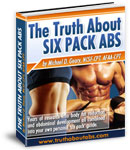

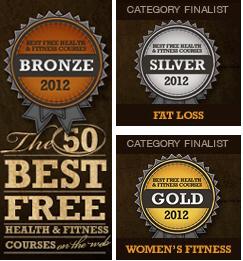


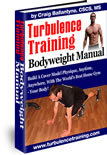
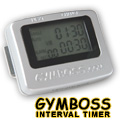



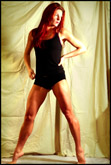

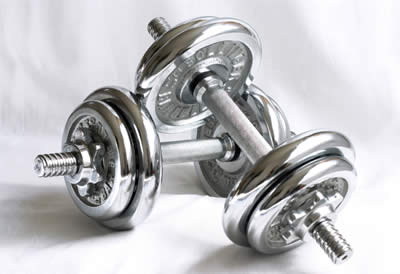
February 12th, 2010 at 4:31 pm
Yay, yay, I loved reading this! I’ve been recovering from foot surgery for the past month, but I was back in the gym the first week after surgery! I just modified my program and kept on going. Really, I couldn’t NOT train…sometimes it’s just in you. :)
February 12th, 2010 at 4:38 pm
THIS is what I’m sayin’…!!! :-) Glad you enjoyed it. I do love Dave’s attitude and tips. :-)